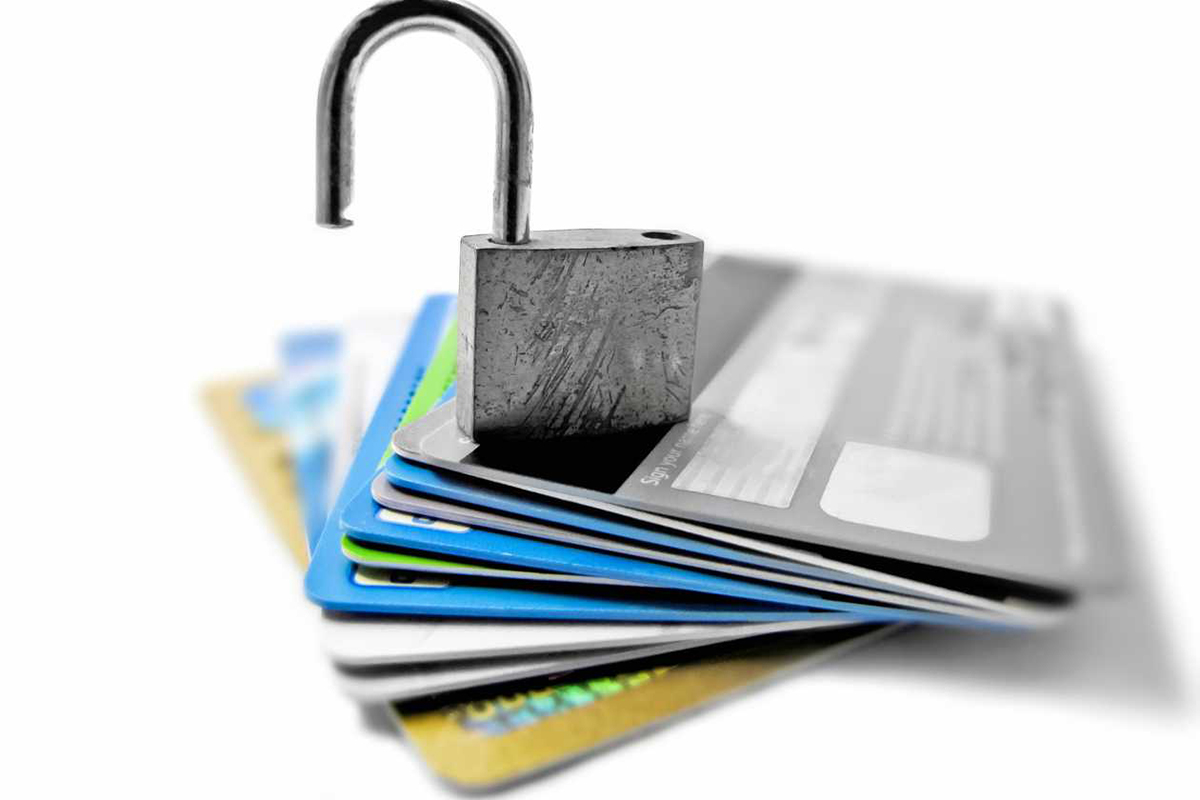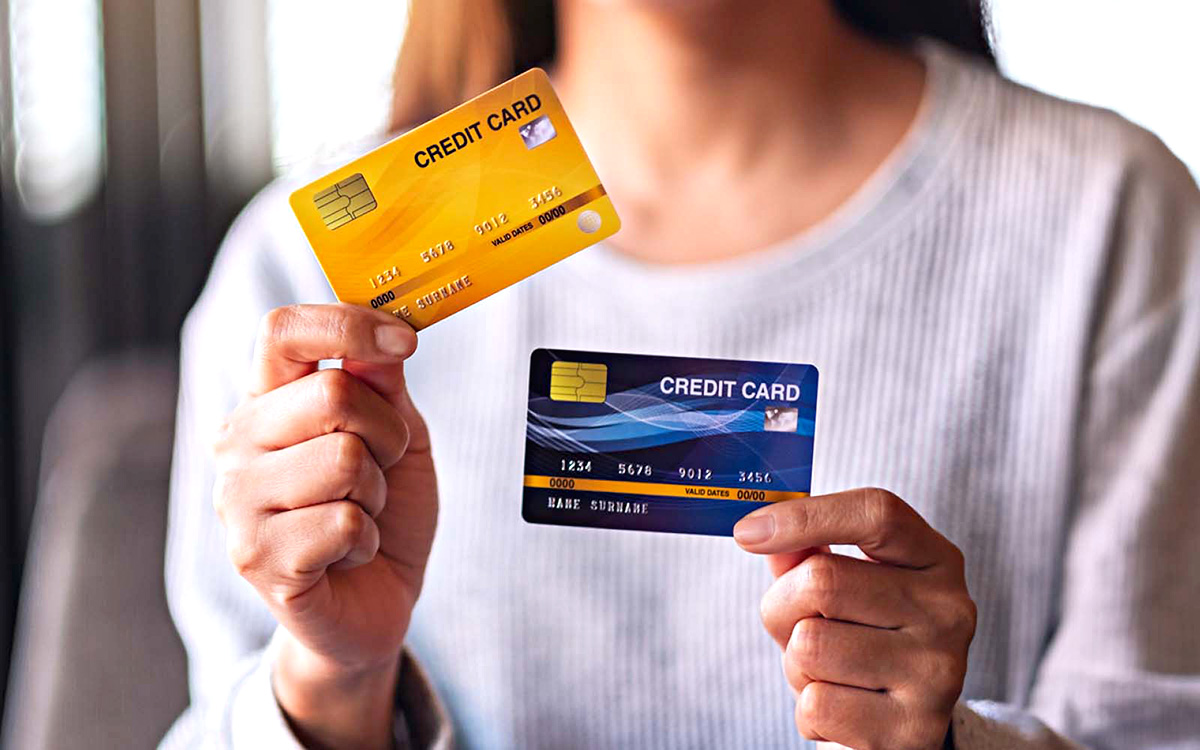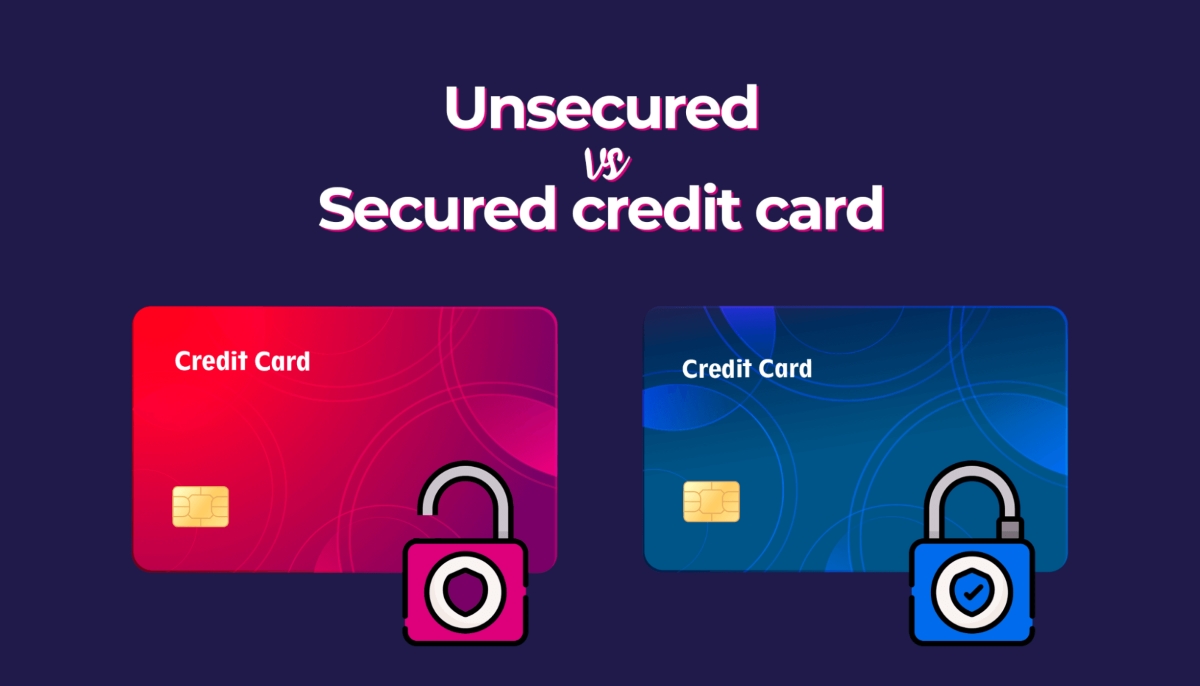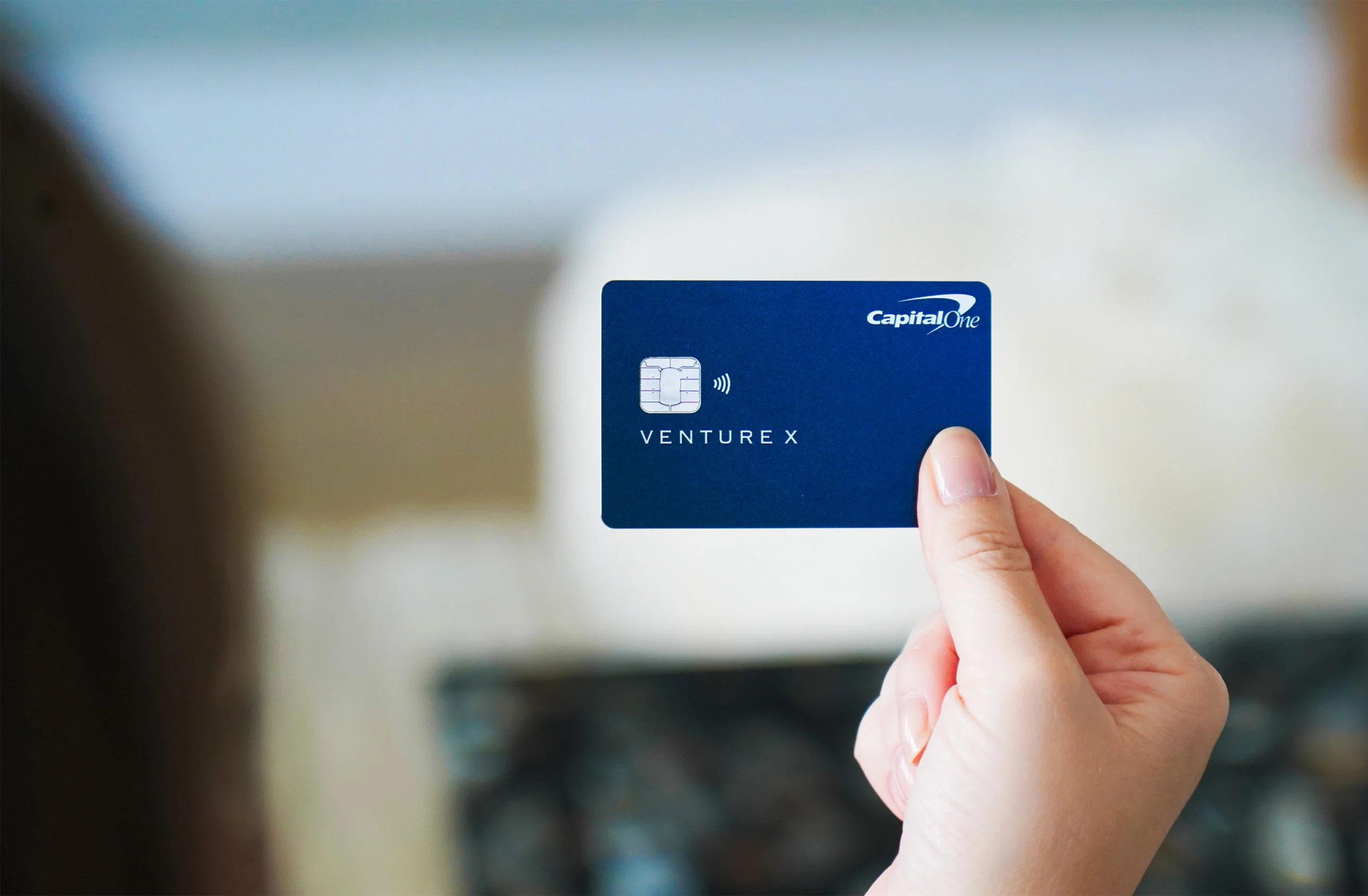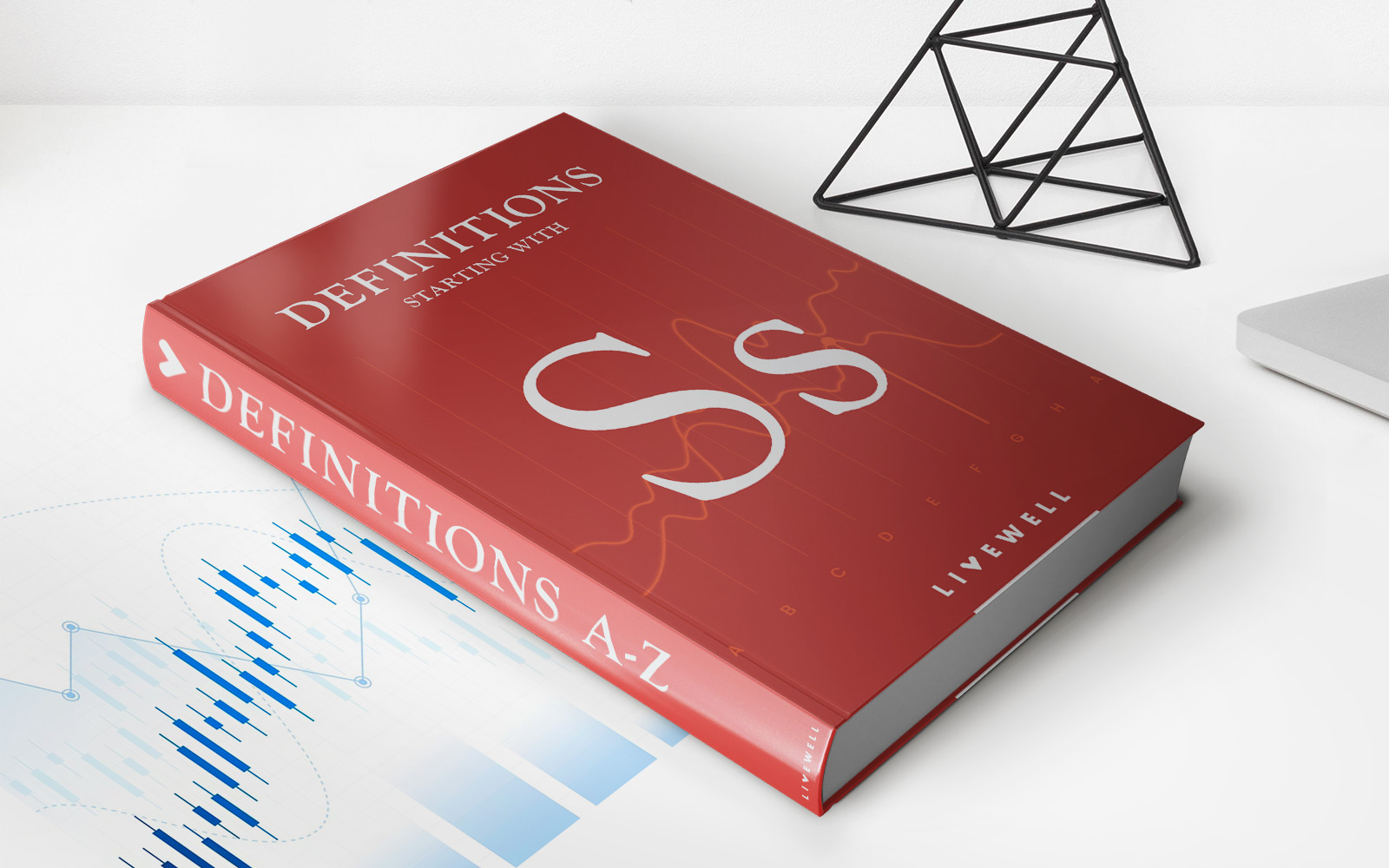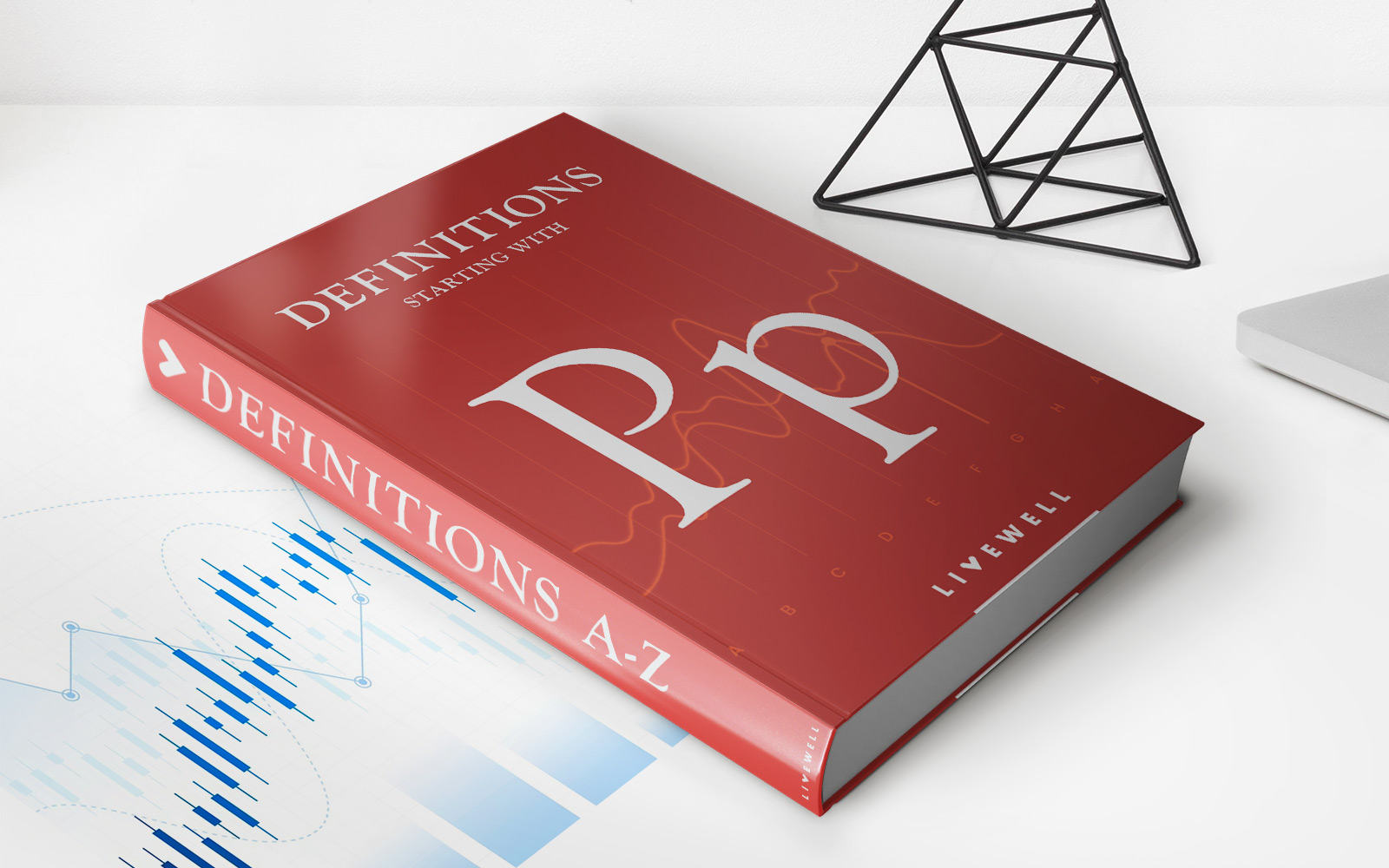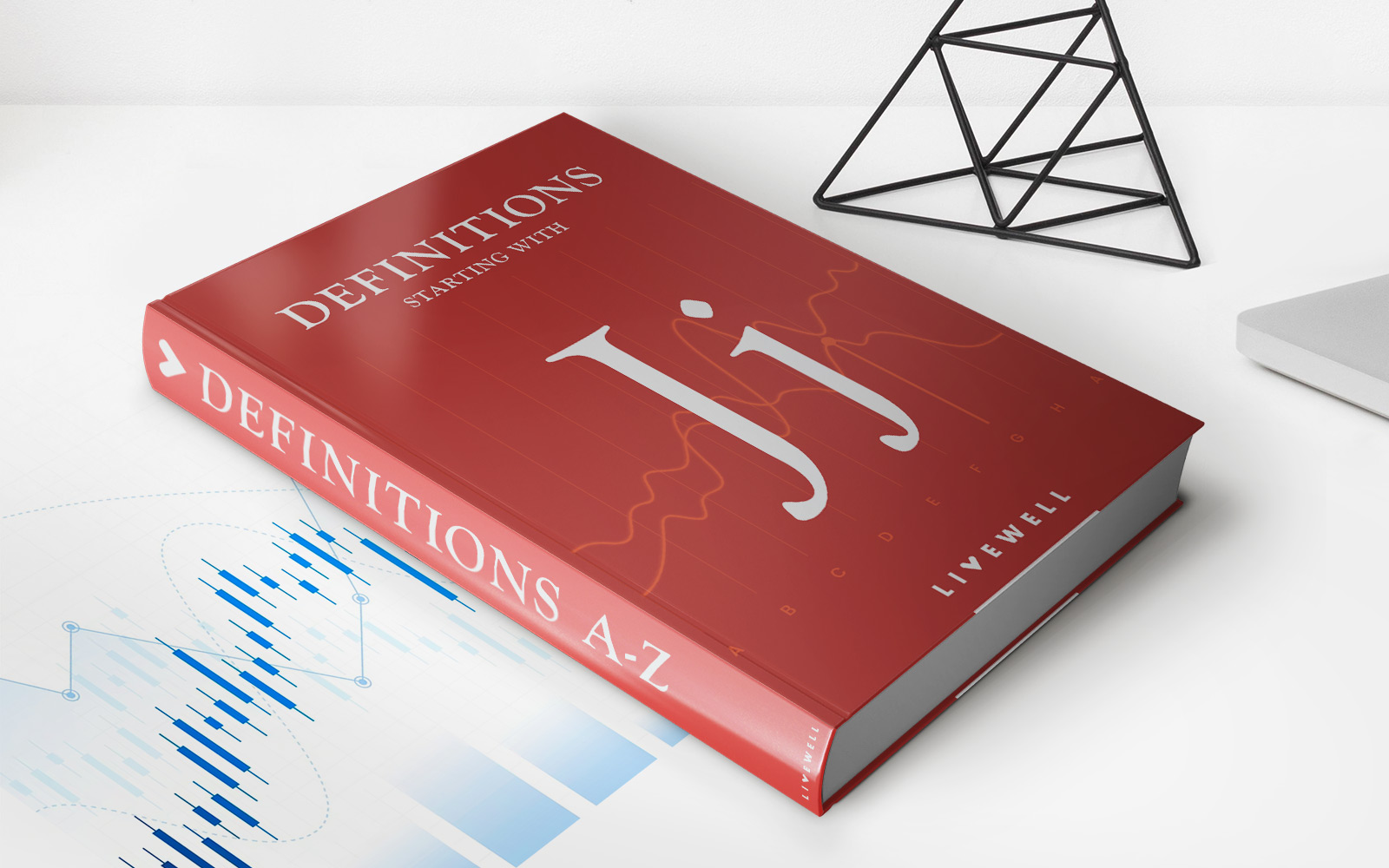

Finance
What Is A Unsecured Credit Card
Modified: January 15, 2024
Discover the benefits of unsecured credit cards and how they can help you manage your finances. Get all the information you need about these convenient financial tools today.
(Many of the links in this article redirect to a specific reviewed product. Your purchase of these products through affiliate links helps to generate commission for LiveWell, at no extra cost. Learn more)
Table of Contents
Introduction
Welcome to the world of credit cards! In the realm of personal finance, credit cards play a significant role in providing convenience and financial flexibility. Among the various types of credit cards available, one popular option is an unsecured credit card. In this article, we will explore the ins and outs of unsecured credit cards, shedding light on their definition, functionality, benefits, drawbacks, qualifications, responsible usage, and alternatives.
What exactly is an unsecured credit card? Unlike secured credit cards that require collateral, such as a cash deposit, unsecured credit cards do not require any form of upfront payment or collateral. They are essentially a line of credit extended to individuals based on their creditworthiness, income, and other financial factors.
Unsecured credit cards, also known as traditional credit cards, offer users the convenience of borrowing funds to make purchases or pay for services without the need for a prior deposit. These cards can be used for various transactions, including everyday expenses, online shopping, travel bookings, and emergencies.
In the next sections, we will delve deeper into how unsecured credit cards work, discussing their benefits, drawbacks, qualifications, responsible usage, and alternatives. So, let’s dive in and unravel the mysteries behind unsecured credit cards!
Definition of an Unsecured Credit Card
An unsecured credit card is a type of credit card that does not require any collateral or upfront payment. Unlike secured credit cards that are backed by a cash deposit, unsecured credit cards rely solely on the borrower’s creditworthiness, income, and financial history to determine the credit limit. This means that the cardholder is not required to have any funds deposited with the card issuer.
Unsecured credit cards are widely available and are typically offered by various financial institutions, including banks and credit card companies. These cards provide users with a pre-approved line of credit that they can borrow against to make purchases or pay for services. The credit limit for an unsecured credit card is determined by the card issuer based on factors such as the applicant’s credit score, income, employment history, and existing debts.
One of the key features of unsecured credit cards is that they offer cardholders the freedom and flexibility to make purchases and pay them off over time. This means that users can carry a balance from one billing cycle to the next, and pay only a minimum amount due or the full outstanding balance. However, it is important to note that carrying a balance and paying only the minimum amount due can result in high interest charges, which can ultimately lead to debt accumulation if not managed responsibly.
Unsecured credit cards also come with various fees and charges, including annual fees, late payment fees, cash advance fees, and foreign transaction fees. These fees can vary depending on the card issuer and the specific terms and conditions of the card.
In summary, an unsecured credit card is a type of credit card that does not require collateral or an upfront deposit. It provides users with a pre-approved line of credit based on their creditworthiness and financial history. It offers flexibility in making purchases and paying them off over time, but it is important to use these cards responsibly to avoid accumulating debt and incurring unnecessary fees.
How Unsecured Credit Cards Work
Unsecured credit cards function by providing cardholders with a line of credit that they can borrow against for personal expenses. Here’s a breakdown of how these cards work:
- Application Process: To obtain an unsecured credit card, individuals need to apply with a credit card issuer. The application typically requires personal information, employment details, income verification, and a credit check. Based on the applicant’s creditworthiness and financial information, the card issuer will determine the credit limit.
- Credit Limit: The credit limit represents the maximum amount of money that the cardholder can borrow on the unsecured credit card. It is a reflection of the cardholder’s creditworthiness, income, and financial history. The credit limit can vary from a few hundred dollars to several thousand, depending on the individual’s financial profile.
- Card Usage: Once approved, cardholders can use their unsecured credit card to make purchases or pay for services. They can use the card at physical retail stores, online merchants, or even for bills and subscriptions. The credit card works as a convenient payment tool, allowing users to complete transactions with ease.
- Repayment Options: Unsecured credit cards offer different repayment options. Cardholders can choose to pay the full outstanding balance by the due date to avoid accruing interest charges. Alternatively, they can choose to make a minimum payment, which is a small percentage of the balance due. However, it is important to note that carrying a balance and paying only the minimum payment can lead to high-interest charges and mounting debt.
- Interest Charges: If the cardholder carries a balance on their unsecured credit card, interest charges will apply. The interest rate, also known as the Annual Percentage Rate (APR), varies among different credit cards and can be influenced by factors such as the cardholder’s credit score and market conditions. It is crucial to understand the interest rate and how it impacts the overall cost of carrying a balance on the card.
- Fees and Charges: Unsecured credit cards often come with fees and charges. These may include an annual fee, which is a fixed amount paid annually for maintaining the card, late payment fees for missed payments, cash advance fees for withdrawing cash using the credit card, and foreign transaction fees for international purchases. Cardholders should be aware of these fees and factor them into their budgeting and usage decisions.
Understanding how unsecured credit cards work is essential for responsible card usage and financial management. By using the card wisely, making timely payments, and keeping credit utilization low, individuals can build a positive credit history and maximize the benefits of an unsecured credit card.
Benefits of Unsecured Credit Cards
Unsecured credit cards offer several benefits that can make them a valuable financial tool for individuals. Here are some of the key benefits of using an unsecured credit card:
- Convenience: Unsecured credit cards provide cardholders with a convenient payment method that can be used for various transactions. Whether it’s making everyday purchases, booking travel accommodations, or shopping online, unsecured credit cards offer a seamless and hassle-free payment experience.
- Building Credit History: Responsible use of an unsecured credit card can help individuals build or improve their credit history. Timely payments and low credit utilization can demonstrate financial responsibility and positively impact credit scores. This can be particularly advantageous for those who are new to credit or looking to rebuild their credit after past financial challenges.
- Rewards and Benefits: Many unsecured credit cards come with rewards programs that allow cardholders to earn points, cashback, or other incentives for their spending. These rewards can be redeemed for various perks, such as travel discounts, gift cards, merchandise, or statement credits. Additionally, some credit cards offer additional benefits such as travel insurance, purchase protection, extended warranties, and access to exclusive events or experiences.
- Financial Flexibility: Unsecured credit cards provide individuals with the flexibility to make purchases and pay them off over time. This can be especially helpful during times when cash flow is tight, as users can spread out payments and manage expenses more effectively. However, it is important to exercise caution and avoid excessive borrowing or carrying high balances to maintain financial stability.
- Emergency Funds: Unsecured credit cards can serve as a valuable backup in case of emergencies or unexpected expenses. Having access to a line of credit can provide peace of mind and help cover unforeseen costs without disrupting one’s financial situation or resorting to undesirable alternatives like payday loans.
- Improving Purchasing Power: With an unsecured credit card, individuals can make larger purchases that they may not have the funds for upfront. This can be particularly useful for significant expenses such as home appliances, electronics, or furniture. By spreading out payments, individuals can manage their budget more effectively and make these purchases more manageable.
It is important to note that while unsecured credit cards offer various benefits, responsible usage is crucial to fully enjoy these advantages. By making payments on time, keeping credit utilization low, and avoiding unnecessary fees, individuals can optimize the benefits of an unsecured credit card and build a healthy financial future.
Drawbacks of Unsecured Credit Cards
While unsecured credit cards have their advantages, it is essential to be aware of their drawbacks as well. Here are some of the potential pitfalls associated with using unsecured credit cards:
- High Interest Rates: Unsecured credit cards often come with higher interest rates compared to other forms of credit. If the cardholder carries a balance from month to month, the accumulated interest can significantly increase the overall cost of borrowing, making it challenging to pay off debts in a timely manner.
- Debt Accumulation: The flexibility of unsecured credit cards can lead to an increased risk of debt accumulation. If cardholders consistently spend more than they can afford to repay, they may find themselves trapped in a cycle of debt, paying only the minimum amount due and struggling to make significant progress in paying off the balance.
- Fees and Charges: Unsecured credit cards often come with various fees and charges that can impact the cardholder’s overall cost. These may include annual fees, late payment fees, cash advance fees, foreign transaction fees, and balance transfer fees. It is important to thoroughly understand the terms and conditions of the credit card to avoid unexpected fees and charges.
- Credit Score Impact: While responsible use of an unsecured credit card can help build a positive credit history, misuse or mismanagement can have adverse effects. Late payments, high credit utilization, and maxed-out credit cards can lower credit scores, making it more challenging to obtain favorable terms on future loans or credit applications.
- Temptation to Overspend: Unsecured credit cards provide individuals with easy access to credit, which can lead to overspending. The ability to make purchases without immediate payment can create a false sense of affordability and tempt cardholders to spend beyond their means, resulting in financial stress and a higher likelihood of accumulating debt.
- Impact on Financial Discipline: Using an unsecured credit card requires discipline and responsible financial management. Without proper budgeting and monitoring of expenses, individuals may find it difficult to keep track of their spending and may fall into the habit of frivolous or impulsive purchases, ultimately compromising their financial stability.
It is important to be mindful of these drawbacks and take necessary precautions when using an unsecured credit card. By practicing responsible spending, making payments on time, and being mindful of fees and interest charges, individuals can mitigate the potential downsides and make the most out of their credit card experience.
Qualifications for Obtaining an Unsecured Credit Card
When applying for an unsecured credit card, certain qualifications and criteria must be met. While the specific requirements may vary among card issuers, here are some common factors that influence eligibility:
- Credit Score: Credit card issuers typically assess an applicant’s creditworthiness through their credit score. A higher credit score, generally above 670, increases the chances of being approved for an unsecured credit card. A strong credit history demonstrates a responsible track record of managing credit and making timely payments.
- Income and Employment: Card issuers consider an individual’s income and employment stability to assess their ability to repay the credit card debt. A steady income and stable employment history provide confidence to the issuer that the cardholder will have the means to make the required payments.
- Debt-to-Income Ratio: Lenders also evaluate an applicant’s debt-to-income ratio, which compares their monthly debt obligations to their monthly income. A lower debt-to-income ratio indicates a lower risk for the issuer, as it demonstrates that the individual has the capacity to handle additional credit card debt.
- Credit History: In addition to credit scores, card issuers consider an applicant’s credit history to assess their creditworthiness. Factors such as the length of credit history, types of accounts, and payment patterns are taken into account. A positive credit history with a demonstrated ability to manage credit responsibly increases the likelihood of being approved for an unsecured credit card.
- Financial Responsibility: Card issuers may also consider an applicant’s overall financial responsibility. This includes factors such as the frequency of credit applications, current debts, and bankruptcies. A history of responsible financial behavior and a manageable debt load contribute to a positive evaluation by card issuers.
It is important to note that meeting these qualifications is not a guarantee of approval for an unsecured credit card, as issuers have their own internal underwriting guidelines. Additionally, each applicant’s individual circumstances and the specific credit card product being applied for can influence the approval decision.
Before applying for an unsecured credit card, it is advisable to check the card issuer’s eligibility criteria and assess one’s own financial situation to determine the likelihood of approval. Applying for multiple cards within a short period can negatively impact credit scores, so it is recommended to research and apply for cards that align with one’s qualifications.
By understanding the qualifications for obtaining an unsecured credit card and assessing one’s own financial position, individuals can increase their chances of approval and make informed decisions when applying for new credit.
How to Use an Unsecured Credit Card Responsibly
Using an unsecured credit card responsibly is crucial to avoid falling into debt and maintaining a healthy financial standing. Here are some tips for responsible credit card usage:
- Create a Budget: Before using your unsecured credit card, establish a monthly budget that outlines your income and expenses. This will help you understand your spending limits and avoid overspending.
- Pay on Time: Make sure to pay your credit card bill on time every month to avoid late payment fees and negative impacts on your credit score. Set reminders or automate payments to ensure you never miss a due date.
- Pay in Full: Whenever possible, pay your credit card balance in full each month. This will prevent interest charges from accumulating and help you avoid carrying a balance and accumulating unnecessary debt.
- Monitor Your Spending: Keep track of your credit card transactions regularly to stay aware of your spending habits. This will help you identify any unnecessary or impulsive purchases and make adjustments to your budget as needed.
- Manage Credit Utilization: Aim to keep your credit utilization ratio, which is the amount of credit you’re using compared to your credit limit, below 30%. This shows responsible credit management and can positively impact your credit score.
- Avoid Cash Advances: Cash advances on credit cards often come with high fees and higher interest rates than regular purchases. It’s best to avoid cash advances unless absolutely necessary to minimize costs.
- Review Terms and Conditions: Familiarize yourself with the terms and conditions of your credit card, including interest rates, fees, and rewards programs. Understanding the details will help you make informed decisions and avoid any surprises.
- Protect Your Personal Information: Safeguard your credit card details and personal information. Only make purchases on secure websites and be cautious when sharing your card information over the phone or via email.
- Regularly Review Your Credit Report: Obtain and review your credit report at least once a year to ensure accuracy and identify any discrepancies or fraudulent activity. This proactive step can help you maintain a healthy credit history.
- Consider Credit Limit Increases Wisely: As you build a positive credit history, you may receive offers for credit limit increases. Evaluate your spending habits and financial situation before accepting these increases to avoid the temptation of overspending.
By following these guidelines for responsible credit card usage, you can effectively manage your unsecured credit card, build a positive credit history, and avoid unnecessary debt. Remember, the key is to use credit card benefits wisely while maintaining control of your finances.
Alternatives to Unsecured Credit Cards
While unsecured credit cards can be a useful financial tool, they may not be the right choice for everyone. Fortunately, there are several alternative options available that can help individuals meet their financial needs. Here are some alternatives to consider:
- Secured Credit Cards: Secured credit cards are a good option for those who have limited or poor credit history. These cards require a cash deposit as collateral, typically matching the credit limit. Secured credit cards allow individuals to build or rebuild their credit by making consistent, on-time payments. Over time, responsible use of a secured credit card can lead to an improved credit score and the opportunity to upgrade to an unsecured credit card.
- Prepaid Debit Cards: Prepaid debit cards offer a convenient and safe way to make purchases without the risk of accumulating debt. These cards are loaded with a predetermined amount of money that can be spent until the balance is depleted. Prepaid debit cards do not require a credit check or impact credit scores, making them accessible to individuals with limited or no credit history.
- Charge Cards: Charge cards are similar to credit cards but require the balance to be paid in full each month. Unlike credit cards, charge cards do not have a preset spending limit, but cardholders must be diligent about paying off the balance to avoid penalties and fees. Charge cards are a good option for those who want the convenience of card payments but prefer to avoid carrying a balance.
- Personal Loans: Personal loans can be a suitable alternative for larger purchases or consolidating high-interest debt. These loans provide a lump sum amount that is repaid over a fixed term with a fixed interest rate. Personal loans often offer lower interest rates compared to credit cards, making them an attractive option for individuals seeking predictable monthly payments.
- Credit Union Loans: Credit unions are member-owned financial institutions that often offer more favorable terms and lower interest rates compared to traditional banks. Credit union loans, such as personal loans or credit builder loans, can be a beneficial alternative to unsecured credit cards, especially for those with limited credit history.
- Debit Cards: Debit cards are linked to a bank account and allow individuals to make purchases using the funds available in their account. While debit cards do not offer the same credit benefits as credit cards, they provide a convenient and immediate way to make transactions without the risk of accumulating debt.
- Budgeting and Saving: Instead of relying on credit, practicing effective budgeting and saving habits can be an excellent alternative to using credit cards. By creating a budget, prioritizing expenses, and building an emergency fund, individuals can avoid the need for credit altogether.
When choosing an alternative to unsecured credit cards, it is important to consider personal financial goals, credit history, and needs. By understanding the options available and selecting the one that aligns with individual circumstances, individuals can make informed decisions and effectively manage their finances.
Conclusion
Unsecured credit cards can be valuable financial tools, providing convenience and flexibility for individuals to make purchases and manage their expenses. However, responsible usage is crucial to avoid accumulating debt and maintaining a healthy financial standing. By understanding the benefits, drawbacks, qualifications, and proper usage of unsecured credit cards, individuals can make informed decisions and maximize the advantages while mitigating the potential risks.
It is important to remember that the key to responsible credit card usage lies in budgeting, making timely payments, and managing credit utilization. By creating a budget, staying within your means, and paying your credit card balance in full whenever possible, you can avoid costly interest charges and debt accumulation. Additionally, monitoring your spending, reviewing terms and conditions, and protecting your personal information can help you maintain control of your credit card usage.
If unsecured credit cards do not suit your needs or financial situation, exploring alternative options such as secured credit cards, prepaid debit cards, or personal loans may be worthwhile. Each alternative comes with its own set of benefits and considerations, so it is essential to assess your specific needs and financial goals before making a decision.
In conclusion, unsecured credit cards can be powerful financial tools when used responsibly. By understanding the nuances of credit card management, individuals can leverage the benefits and avoid the drawbacks. Whether you choose an unsecured credit card or opt for an alternative, maintaining discipline, staying informed, and making sound financial decisions will help you achieve financial well-being and make the most of your credit journey.

